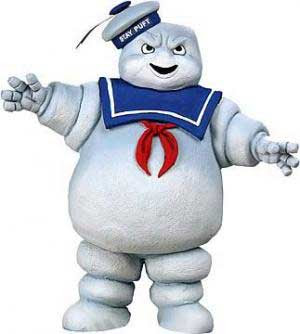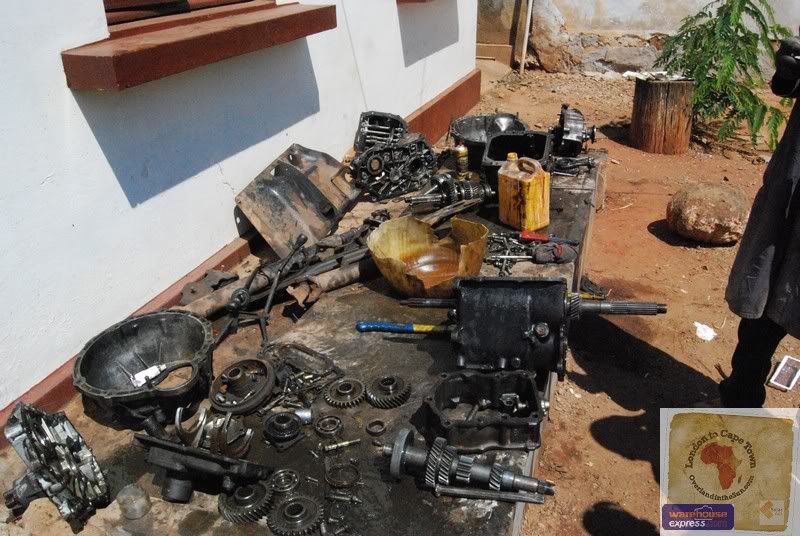With the crank main bearings all done and dusted, all that remained was to select
the conrod bearings. First up was to check the conrods themselves. These take
a fair pounding in the engine and it's not unusual to find wear here, so, it's out with the
bore gauge again and both the big ends and the small ends get checked for roundness and wear......

The big ends on my rods came up just about ok, but, unfortunately the small ends were
showings signs of a lot of wear. Below you can see a closer picture of the small
end........

What you can see above is that the small end bore actually has a bronze bush inserted into it
to increase it's wear resistance. But, theres only so much a bush can do, twenty years of constantly
trying to hold on to a piston takes it's toll. A quick look up of the tolerance manual tells us this bush should
have a diameter of 0.8669" to 0.8671". Before even measuring mine I could tell they were fairly worn.
If you placed a gudgeon pin into any of the rods you could actually feel it rock a little in the bushing.........

And this was backed up by the measurements, all four small end bushes were well
over the 0.8671" size, with the worst coming in at 0.8682".
So, options?
Well, you can have the bushes replaced by a good machine shop, but, it's a pricey
exercise around here and who ever does it really needs to know what they're at as
it's fairly easy to make a balls of it. Plus one of the rods big ends was also just on the border
of being "out of round".
Option number two was carry out an armed robbery on the local main dealer to
get some new rods, not a great option really, the rods have a 5 day delivery time and
there was a good chance a member of staff would press the panic button while we all waited
for the rods to arrive.
Which brought us to option number 3, aftermarket rods.........

The new rods are forged in a "H" beam design and they've
also been shot peened, crack tested and balanced end to end, all of which means
they should be a good bit stronger than the originals. Which in turn means you should be
able to raise the rev limit of the engine without the fear of one of them popping out through
the block to say hello.
With the state of tune this engine is being built to I won't need to raise the rev limit much
to achieve the engine's maximum horse power, so all they need to be for this build is equally
as strong as the originals and not require you to sell a kidney to obtain them, like the originals would.
Another nice benefit of the new rods is that they're lighter than the originals, to the tune of
51 gram's per rod..........


Which helps with the other objective of this build, and thats where ever possible
to lower the weight of the rotating mass of the engine. Simply put, trying to make
anything that moves in the engine lighter with objective of having an engine thats quicker
to rev.
As with most after market rods these ones also came with ARP rod bolts, which are stronger
than the originals. I would have been perfectly happy to use a new set of original bolts, as to the
best of my knowledge they are a good design rod bolt to begin with, but the new rods are tapped out
for the threads on the ARP bolts, which is different to the original bolts so thats what we'll be using........

Like the original bolts the ARP one's are also stretch bolts. Basically when you tighten them down
the bolts stretches a little and it's this stretch which keeps the bolt tight over time. When a stretch bolt
is undone sometimes it returns to it's original length and in this case it's usually good to go again. However
sometimes it's doesn't, it stays a little stretched when loosened and when this happens the bolt can't be
guaranteed to stay tight if it's reused again. For this reason standard rod bolts are always changed when doing
a rebuild because you've no way of telling whether they've returned to their original lengths when removed.
However, with the ARP bolts you can measure the exact length of a new bolt using the proper tool and if you
record this length and the bolts fitted position you can now tell if it's fit to be reused next time around..........

The down side is the extra effort required to do all this is a pain in the arse if you are inherantly
lazy.
New rods get the once over with the bore gauge to make sure they're exactly what was paid for.......

After which we move on to sizing the conrod bearings.
Now unlike the main bearings where you had the choice of a red or blue size bearing
to fine tune the oil clearance gap, with the conrod bearings BMW have decided to make
the choice a lot simpler. You can have yellow, yellow or yellow.
Yep, theres only one thickness conrod bearing available from the main dealer and thats
yellow.
If the conrod journals on your crank have been machined down to 1st, 2nd or 3rd undersize
to correct wear then you still have a choice of 1st, 2nd or 3rd oversize bearings to match this,
but thats as far as the decision making needs to go.
That doesn't however mean that you'd don't need to check the clearance, that'd be far to simple.
So, pair of yellow bearings in and the conrod cap torqued down, out with the bore gauge and measure
the diameter..............

Diameter measured at 1.8913", quick check of the notes to see what the matching conrod
journal on the crank was, and it shows as 1.8893". Take one from the other 1.8913"-1.8893"
and your left with a conrod big end oil gap of 0.0020".
Tolerance manual says between 0.0008" and 0.0022" is good to go.
As usual, each individual rod is measured to figure out it's clearance and then later verifyed
with the Plastigauge.
Just a quick one on the bearing colors before we leave it, if you've never seen a BMW bearing before
the colours (blue and red for the mains and yellow for the conrods) are actually marked on the edge
of the bearing shell. You can just about see the little yellow smear on the conrod top bearing below at
the 12 o'clock position...........

And that takes care of all the prep work for the bottom end for now,
next up we'll be moving on to the cylinder head.
Using match sticks to keep your eyes open yet?





































































 [/color]
[/color]












































































